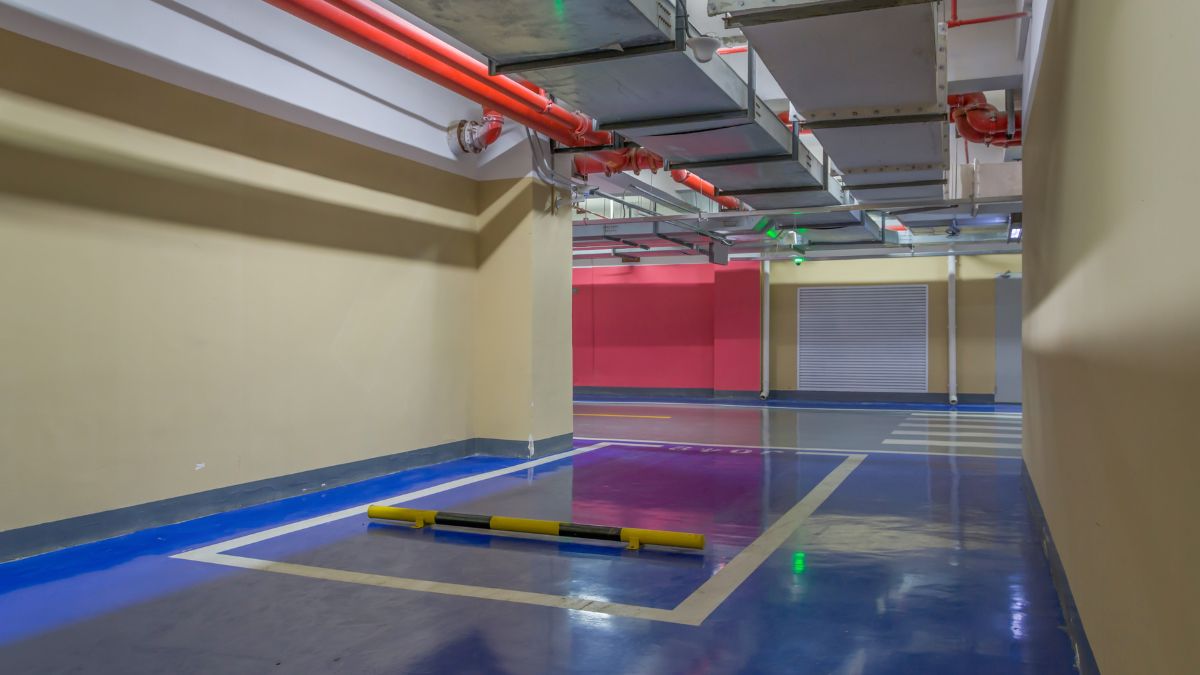Blog
Demystifying Methatreams: Common Misconceptions and Key Insights

Methatreams are often clouded in mystery, leaving many to wonder what they truly are and how they can impact the business landscape. In an era where digital transformation is key to success, understanding this innovative concept has never been more crucial. Whether you’re a seasoned professional or just venturing into the world of modern business strategies, demystifying Methatreams will provide you with essential insights that could reshape your approach. Join us as we explore common misconceptions surrounding Methatreams and uncover their true potential for enhancing efficiency and driving growth in businesses today. Get ready to dive deep into a topic that’s not only relevant but also transformative!
Debunking Common Myths about Methatreams
Many misconceptions surround Methatreams, leading to confusion and skepticism. One prevalent myth is that they are only for large corporations. In reality, businesses of all sizes can leverage Methatreams effectively.
Another common belief is that using Methatreams requires extensive technical knowledge. However, many platforms offer user-friendly interfaces designed for non-technical users.
Some people think implementing Methatreams involves a hefty financial investment. While there may be initial costs, the long-term savings and efficiencies often outweigh those expenses.
Additionally, there’s a notion that these systems are too rigid and can’t adapt to changing business needs. On the contrary, modern Methatream solutions are highly customizable and scalable.
By dispelling these myths, we open doors for more organizations to embrace the advantages of incorporating Methatreams into their operations. This understanding fosters innovation and growth across various industries.
The Benefits of Using Methatreams in Business
Methatreams offer businesses a unique edge in today’s competitive landscape. They streamline processes, allowing for greater efficiency and productivity.
By harnessing the power of Methatreams, organizations can enhance collaboration among teams, breaking down silos that often hinder communication. This integration fosters innovation as ideas flow freely across departments.
Cost-effectiveness is another significant advantage. Companies can reduce operational expenses by automating repetitive tasks through Methatreams. This automation frees up valuable resources to focus on strategic initiatives.
Moreover, data-driven decisions become easier with . Businesses gain access to real-time analytics that inform strategies and improve customer experiences.
Adopting Methatreams cultivates agility within an organization. Companies can swiftly adapt to market changes and customer demands while maintaining a competitive stance in their industry. These benefits make an invaluable asset for modern enterprises looking to thrive.
Success Stories of Companies Using Methatreams
Many companies have harnessed the power of Methatreams to elevate their operations. For instance, a mid-sized retail chain integrated Methatreams into its inventory management system. This led to a remarkable 30% reduction in stockouts and improved customer satisfaction.
Another noteworthy example is a tech startup that utilized for data analysis. By leveraging this innovative approach, they identified market trends faster than competitors. As a result, they launched products that captured significant market share.
A global manufacturer adopted Methatreams to streamline communication across departments. This initiative not only enhanced collaboration but also reduced project timelines by nearly 40%. Teams became more agile and responsive to changes in demand.
These success stories demonstrate how diverse industries can reap substantial benefits from implementing effectively. Each case highlights unique applications tailored to specific business needs, proving the versatility of this strategy.
Key Factors to Consider When Implementing Methatreams
When implementing Methatreams, understanding your specific needs is essential. Tailoring the approach to fit your business model can enhance effectiveness.
Next, consider staff readiness. Training employees on how to use effectively will ensure smooth integration into daily operations.
Technology infrastructure plays a critical role too. Assess whether your current systems are compatible or if upgrades are necessary for optimal performance.
Don’t overlook data privacy and security measures. Establishing clear protocols protects sensitive information while building trust with stakeholders.
Set measurable goals. Defining success metrics allows you to track progress and make informed adjustments along the way. This strategic focus fosters continuous improvement in leveraging for growth and efficiency.
Challenges and Solutions for Using Methatreams
Implementing Methatreams can come with its own set of challenges. One common hurdle is the resistance to change within organizations. Employees may feel overwhelmed by new processes or fear losing their jobs.
Training becomes essential in overcoming this barrier. Providing comprehensive workshops and ongoing support helps staff understand the benefits.
Another challenge lies in data integration. Many businesses struggle to connect existing systems with new Methatream technologies, leading to inefficiencies.
To tackle this issue, investing in robust IT solutions is crucial. Collaborating with experienced tech partners can streamline integration efforts.
Security concerns often arise when adopting any new technology. Businesses must prioritize cybersecurity measures when implementing Methatreams.
Regular audits and updates enhance protection against potential threats, ensuring smoother operation and peace of mind for all stakeholders involved.
Conclusion
Understanding Methatreams opens up new avenues for businesses looking to innovate and grow. By dispelling common myths, we can see the true potential these systems offer. Many organizations have successfully integrated into their operations, reaping rewards that include improved efficiency and enhanced decision-making.
While implementing Methatreams comes with its challenges, awareness of these hurdles allows companies to craft effective solutions. The journey may require adjustments, but the benefits are undeniable. As more businesses embrace this technology, it’s clear that will play a pivotal role in shaping future strategies.
Staying informed about trends and best practices in utilizing will be essential as you navigate your own path forward. Consider how incorporating these innovative systems could transform your business landscape and keep you ahead of competitors in today’s fast-paced market.
Blog
Transforming Your Garage: The Advantages of Epoxy Floor Coatings

Today’s garages are much more than simple storage spaces—they’re extensions of the home, used for everything from workshops to gyms. Investing in a high-quality floor finish can dramatically elevate your space. Homeowners searching for durability, style, and easy upkeep find outstanding results with epoxy floor coatings. If you’re looking for experts in concrete epoxy flooring in Chesapeake, discovering the benefits of epoxy can help you make a confident, informed decision for your project.
Unlike standard garage floors, epoxy coatings provide a seamless, high-performance surface that resists wear, stains, and everyday abuse—while delivering an impressive visual upgrade. Whether your goal is a safer, more appealing home environment or enhanced resale value, epoxy offers a versatile solution tailored to modern needs.
Many people begin with a simple search for garage floor coating near me and quickly realize the advantages epoxy offers over concrete or paint. Finding the right installer ensures maximum benefit and longevity for your investment.
Epoxy isn’t just about looks—it transforms a utilitarian space into a functional, easy-to-maintain zone. The combination of durability, chemical resistance, and customizable finishes makes epoxy stand out among flooring choices.
According to a recent HGTV article, epoxy’s rising popularity is largely due to its adaptability and protective properties, making it a top choice for garages of all sizes and uses.
Durability and Longevity
Garage floors endure heavy traffic, dropped tools, vehicles, and equipment. Epoxy coatings create a tough, impact-resistant layer that protects the underlying concrete from cracks, chips, and other forms of damage. This extends the life of your garage floor dramatically, so you spend less on repairs and replacements. Many epoxy floors last 10-20 years with minimal maintenance, far outpacing simple concrete or paint solutions.
Chemical and Stain Resistance
Garages are prone to spills—oil, antifreeze, solvents, and more. Bare concrete absorbs these substances, leading to stained, unsightly floors that are difficult to clean. Epoxy, on the other hand, forms a seamless, non-porous barrier. Spills remain on the surface and can be wiped away without leaving lasting damage, ensuring your garage looks great for years to come. For those who use their garages for car maintenance or hobbies, this level of protection is essential. The U.S. Department of Energy notes that this barrier significantly reduces floor deterioration over time.
Enhanced Safety Features
Safety is paramount in busy garages, especially households with children, seniors, or frequent visitors. Epoxy coatings can include slip-resistant aggregate materials, which increase traction and minimize the risk of falls—even when the floor is wet or oily. This extra layer of safety is particularly important in regions with snowy or rainy weather, where water is often tracked into the garage.
Aesthetic Appeal
Epoxy floors provide much more than utility—homeowners love the bright, customizable finishes available. With choices in color, texture, and gloss, epoxy can reflect your personal style or seamlessly integrate with your home’s design. Popular options include metallic or flake finishes, which mask imperfections and add a professional, polished look to any garage.
Easy Maintenance
Keeping a garage clean is notoriously difficult, but epoxy makes it easy. The coating’s smooth surface allows dust, grime, and debris to be quickly swept or mopped away. Unlike tile or unfinished concrete, there are no joints or pores where dirt can settle. This not only shortens cleaning time but also reduces allergens and keeps your home environment healthier.
Environmental Benefits
Modern epoxy systems are designed with sustainability in mind. Many products contain low levels of volatile organic compounds (VOCs), leading to less off-gassing and better indoor air quality. Plus, the exceptional lifespan of epoxy coatings means less material waste over the long term compared to traditional flooring replacements. For environmentally conscious homeowners, these features align with green building trends and support eco-friendly lifestyles.
Cost-Effectiveness
The initial investment in epoxy flooring may be higher than some alternatives, but the long-term savings are substantial. Because epoxy lasts for years without needing major repairs, the total cost of ownership is lower. Reduced cleaning supplies, maintenance labor, and fewer replacements all contribute to financial savings across a garage floor’s lifespan.
Increased Property Value
An attractive, functional garage floor is a significant selling point for potential buyers. Epoxy coatings help your property stand out in competitive real estate markets by signaling quality, attention to detail, and future savings. These upgrades can often return much of their initial investment when it comes time to sell your home, offering both immediate and long-term value.
Epoxy floor coatings represent a smart, lasting upgrade for any homeowner aiming to boost garage performance, safety, and style. By choosing expert installation and the right combination of features, you’ll benefit from beauty and durability for years to come.
Blog
ProcurementNation.com: Your Go-To Resource for Procurement Insights

Welcome to the world of procurement, where strategic decision-making meets operational efficiency. At ProcurementNation.com, we are passionate about empowering businesses with the knowledge they need to thrive in a competitive landscape. Whether you are a seasoned professional or just stepping into the realm of procurement, this platform is designed for you. Dive into a treasure trove of insights that will enhance your understanding and elevate your business practices. Stay ahead of industry trends and discover innovative strategies that can drive success in today’s fast-paced market environment. Join us on this journey as we explore the many ways ProcurementNation.com can transform your approach to procurement!
The Importance of Procurement in Business Operations
Procurement plays a vital role in business operations. It involves sourcing and acquiring goods and services essential for day-to-day functions. Effective procurement can lead to significant cost savings, allowing companies to allocate resources more efficiently.
Strategic procurement enhances supplier relationships. Trust and collaboration with vendors often translate into better prices, quality products, and improved service levels. This partnership is crucial for maintaining competitive advantage.
Moreover, the procurement process impacts sustainability efforts. Ethical sourcing practices contribute positively to brand reputation while promoting environmental responsibility. Businesses that prioritize sustainable procurement attract conscious consumers who value ethical considerations.
Data-driven decision-making within procurement processes also fosters innovation. New technologies enable organizations to analyze trends and make informed choices quickly, ensuring adaptability in a fast-paced market landscape. By prioritizing effective procurement strategies, businesses position themselves for long-term success.
Key Features and Resources Offered by ProcurementNation.com
ProcurementNation.com stands out with its diverse range of features tailored for procurement professionals. At the forefront is a comprehensive library of articles, guides, and tutorials that delve deep into various aspects of procurement.
Users can access valuable tools like cost analysis templates and vendor evaluation checklists. These resources simplify complex processes, making them accessible to everyone in the field.
The platform also offers interactive webinars led by industry experts. Participants gain insights directly from thought leaders who discuss current trends and best practices.
Networking opportunities abound through forums where users connect with peers. These discussions foster collaboration and knowledge sharing among procurement practitioners worldwide.
Additionally, ProcurementNation.com curates the latest news stories related to supply chain management. Staying informed has never been easier or more efficient for professionals looking to enhance their strategies.
Expert Insights and Analysis on Industry Trends
ProcurementNation.com is your window into the evolving landscape of procurement. Industry experts constantly analyze trends that impact businesses, providing fresh insights that can transform operations.
Stay ahead with in-depth articles focused on emerging technologies, supply chain innovations, and sustainable practices. These analyses not only outline current events but also predict future shifts in the market.
Engage with thought leaders through interviews and opinion pieces that dive deeper into specific challenges facing procurement professionals today. Understanding these perspectives equips you to make informed decisions for your organization.
With a dedicated section for expert opinions, ProcurementNation.com fosters an environment where knowledge thrives. This continuous stream of information helps members adapt strategies effectively as they navigate complexities within their industries.
Case Studies and Success Stories from Top Brands
ProcurementNation.com showcases a variety of case studies that highlight the transformative power of effective procurement strategies. These real-world examples reveal how top brands have optimized their supply chains for enhanced efficiency and cost savings.
One notable success story features a multinational retailer that revamped its sourcing process. By leveraging data analytics, they identified new suppliers who not only reduced costs but also improved product quality.
Another compelling case involves an innovative tech company embracing sustainable procurement practices. Their commitment to eco-friendly materials not only attracted conscious consumers but also strengthened their brand loyalty.
These stories serve as inspiration for businesses looking to elevate their own procurement practices. They demonstrate that with the right approach, significant improvements are achievable across different industries.
How ProcurementNation.com Can Benefit Your Business
ProcurementNation.com is designed to elevate your business’s procurement strategy. Access a wealth of information that helps streamline decision-making processes.
The platform offers tailored resources, from templates to expert articles, ensuring you have the right tools at your fingertips. This means less time searching for answers and more time focusing on growth.
Networking opportunities abound as well. Engage with industry leaders and fellow professionals who share insights and experiences. Collaboration can lead to innovative solutions.
Stay ahead of market trends by leveraging analytics provided on the site. Understanding shifts in procurement practices gives you a competitive edge.
Whether you’re a small startup or an established enterprise, ProcurementNation.com provides support that adapts to your needs, making it easier than ever to enhance efficiency and reduce costs across the board.
Conclusion: Join the Procurement Nation Community Today!
ProcurementNation.com is more than just a website; it’s a vibrant community for procurement professionals and enthusiasts alike. By harnessing the power of information, insights, and collaboration, Procurement Nation empowers individuals and businesses to excel in their procurement endeavors.
Joining this community opens doors to valuable resources that can enhance your understanding of procurement processes. The expert insights available on the site help you stay ahead of industry trends while case studies provide real-world examples of success. Whether you’re looking to optimize operations or simply broaden your knowledge base, there’s something here for everyone.
Engaging with others who share similar interests in procurement fosters collaboration and innovation. You’ll find opportunities not only to learn but also to contribute your own experiences and strategies. This sense of belonging encourages growth—both personally and professionally.
Don’t miss out on the chance to elevate your procurement practices. Dive into ProcurementNation.com today and become part of a network dedicated to excellence in procurement!
Blog
Insetprag: Exploring Its Impact on Modern Technology

In the ever-evolving landscape of modern technology, new terms and innovations emerge regularly, capturing our imagination and reshaping how we engage with the world. One such term that has been gaining traction is “insetprag.” While it may sound unfamiliar at first, its implications are far-reaching. As industries adapt to rapid advancements, understanding insetprag becomes essential for anyone interested in technology’s trajectory. Let’s dive into what makes this concept unique and explore its transformative potential across various sectors.
What is Insetprag?
Insetprag refers to a conceptual framework designed to enhance the integration of processes within technology applications. It embodies an approach that encourages innovation by streamlining operations and fostering collaboration across different platforms.
At its core, insetprag emphasizes adaptability. This allows systems to respond quickly to changing demands while ensuring efficiency in resource utilization.
The term encapsulates various methodologies that promote seamless interaction between software tools, hardware components, and end-users. By facilitating communication among disparate systems, insetprag enhances overall functionality.
In many ways, it serves as a bridge connecting traditional practices with modern technological advancements. As industries continue to embrace digital transformation, understanding insetprag becomes crucial for harnessing their full potential in an increasingly interconnected world.
The Origins and Evolution of Insetprag
Insetprag traces its roots back to the early stages of digital architecture. Initially conceived as a tool for enhancing data management, it quickly gained traction in various tech sectors.
As technology evolved, so did Insetprag. It transformed from a niche solution into a mainstream framework that supports complex systems. Developers recognized its versatility and adaptability.
The introduction of artificial intelligence further propelled Insetprag’s growth. With AI integration, it became capable of handling more intricate tasks and analyses than ever before.
Over time, collaboration among technologists led to continuous refinements in its functionality. This collective effort has allowed Insetprag to maintain relevance amid rapid technological advancements.
Today, it’s an integral part of many platforms across industries ranging from finance to healthcare. The journey of Insetprag highlights the synergy between innovation and necessity in shaping modern solutions.
How Insetprag is Used in Modern Technology
Insetprag finds its way into various facets of modern technology. It enhances data processing speeds, making systems more efficient. This innovation plays a crucial role in cloud computing, where it optimizes resource allocation.
In the realm of artificial intelligence, insetprag improves machine learning algorithms. By refining these processes, it allows for quicker decision-making and better predictions.
Smart devices also benefit from this advancement. Insetprag contributes to their ability to analyze user behavior and adapt accordingly. This leads to a more personalized experience across applications.
Moreover, in cybersecurity, insetprag aids in identifying threats faster than traditional methods can manage. Its capability to process massive datasets swiftly helps protect sensitive information effectively.
From communication tools to automation technologies, insetprag is changing how we interact with our digital world daily.
Advantages and Disadvantages of Insetprag
Insetprag offers several advantages worth noting. Its efficiency in processing data allows for faster computations, making it invaluable in sectors like finance and healthcare. The scalability of Insetprag means businesses can adapt to growing demands without significant overhauls.
On the flip side, there are disadvantages to consider. High implementation costs can deter smaller organizations from adopting this technology. Additionally, the complexity of integration may require specialized skills that many companies lack.
Security concerns also arise with Insetprag’s use. As more sensitive information is processed through these systems, vulnerabilities may surface if not properly managed. Balancing innovation with risk management is crucial as industries navigate this evolving landscape.
Real-World Examples of Insetprag in Action
Insetprag has found a significant foothold in various industries, showcasing its versatility and utility. In the healthcare sector, hospitals utilize insetprag technology to streamline patient data management. This ensures quicker access to medical records and enhances decision-making processes.
In retail, businesses are adopting insetprag for inventory tracking. With real-time updates, retailers can optimize stock levels and reduce waste. Customers benefit from improved product availability due to efficient supply chain management.
The automotive industry also leverages insetprag for enhancing vehicle safety features. Smart systems monitor driver behavior and provide immediate feedback, reducing accident rates significantly.
In education, institutions employ insetprag tools for personalized learning experiences. By analyzing student performance data, educators tailor their teaching approaches effectively.
These examples illustrate how embedded technologies not only improve efficiency but also enhance user experiences across diverse fields.
The Future of Insetprag and Its Potential Impact on Society
The future of insetprag holds immense promise. As technology continues to advance, its integration into daily life will only deepen. This could lead to groundbreaking changes across various sectors.
Imagine smart cities powered by insetprag innovations. These advancements can optimize energy usage and improve transportation efficiency. Enhanced data analytics may create a more sustainable urban environment.
In healthcare, insetprag has the potential to revolutionize patient care through personalized medicine and improved diagnostic tools. Faster response times in emergency situations could save lives.
Education also stands to benefit significantly from these developments. Interactive learning experiences tailored via insetprag technologies can engage students on a whole new level.
However, with great power comes responsibility. Ethical considerations surrounding privacy and security will need careful attention as we embrace this evolving landscape of possibilities. The societal impact is vast and far-reaching, shaping our collective future in ways still unfolding.
Conclusion
Insetprag has emerged as a pivotal force in the realm of modern technology. Its origins trace back to innovative research and development, leading to its widespread application across various sectors. The evolution of Insetprag reflects our ongoing quest for efficiency and advancement.
Utilization in today’s technological landscape showcases Insetprag’s versatility. From enhancing software algorithms to streamlining communication networks, it plays a crucial role in shaping how we connect and interact with the digital world. However, it’s essential to consider both its advantages—such as increased processing speed—and disadvantages, including potential security vulnerabilities.
Real-world examples highlight how organizations are harnessing Insetprag for operational improvements. Businesses have reported significant gains by integrating this technology into their systems, demonstrating tangible benefits that resonate throughout entire industries.
Looking ahead, the future of Insetprag holds immense promise. As advancements continue, society stands on the brink of transformative changes driven by this powerful tool. Embracing these developments could lead to unprecedented innovations that enhance daily life.
The journey of Insetprag is just beginning; its impact will likely shape not only technological landscapes but also societal dynamics moving forward.
-

 Entertainment6 months ago
Entertainment6 months agoSflix: How It’s Changing the Way We Watch Movies and TV Shows
-

 Blog4 months ago
Blog4 months agohanime1: The Ultimate Destination for Anime Lovers
-

 Technology7 months ago
Technology7 months agoSimpcitt: The Rise of a Unique Online Community
-

 Entertainment5 months ago
Entertainment5 months agoCrackstreams 2.0: The Future of Free Sports Streaming?
-

 Bills7 months ago
Bills7 months agoWhy Does My Instagram Reel Stop Getting Views After One Hour? How to Fix It?
-

 80s7 months ago
80s7 months agoFavorite 100 Songs of the 80s: (#1) Michael Jackson – Billie Jean
-

 Technology7 months ago
Technology7 months agoAnon Vault: Protecting Your Digital Footprint
-

 Blog7 months ago
Blog7 months agoSimpcitu: The New Age Trend Shaping Online Interactions
